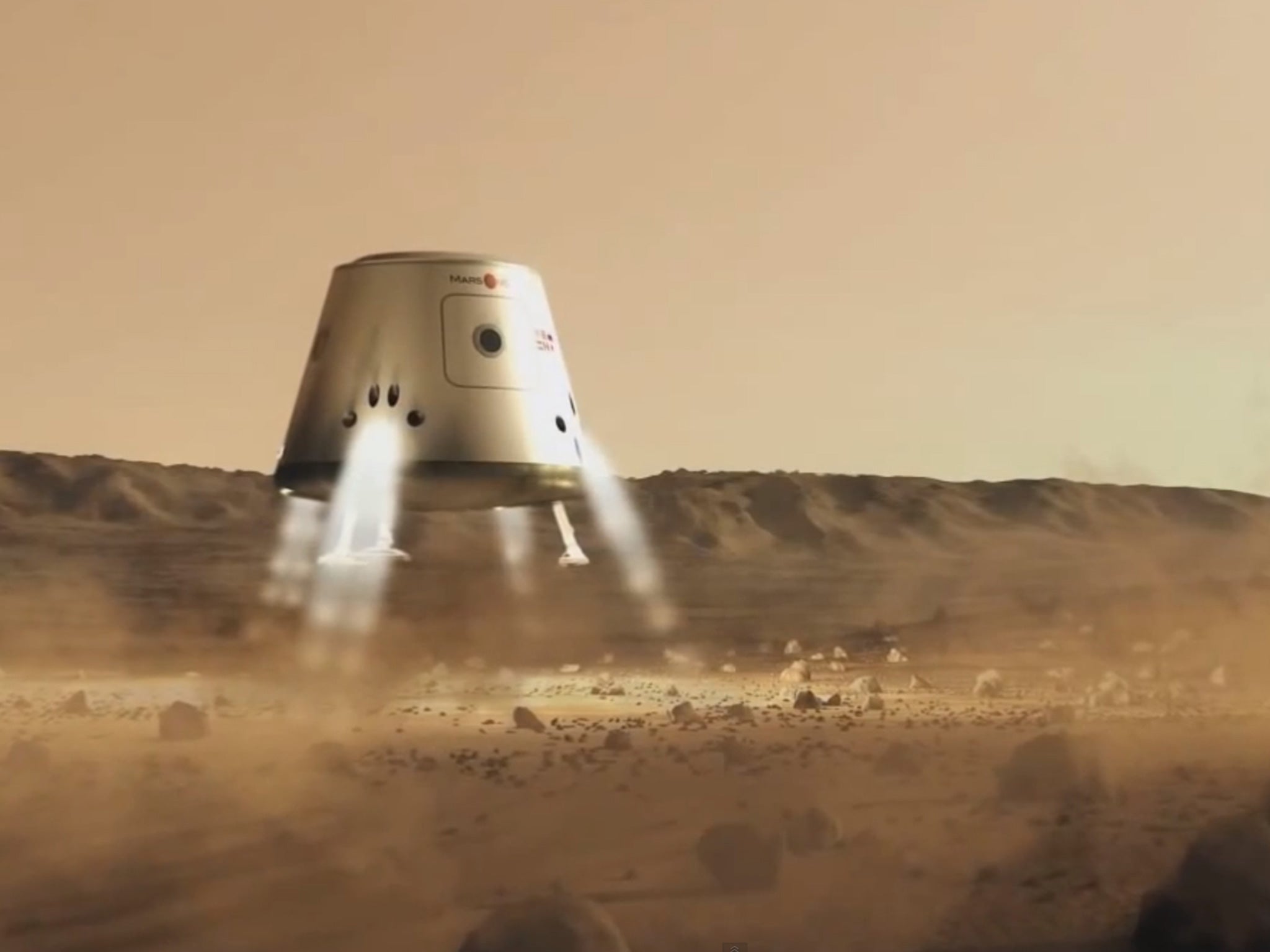The man behind the Mars One expedition on organising 'one of the biggest challenges humans have ever experienced'
With the project to inhabit the Red Planet under fire, the man behind it tries to convince Adam Lusher it’s not a flight of fancy

In 1997 a young Dutch student had a dream. “I saw the pictures beamed back from Mars by Nasa’s Sojourner rover,” Bas Lansdorp, now 37, remembers, “and I just had the feeling that I wanted to go there myself and explore.”
Now Mr Lansdorp, who is the founder and chief executive of the Mars One project, says he is at last beginning to turn dream into reality. This week he announced a shortlist of 100 volunteers for a televised one-way mission to create the first human colony on the Red Planet.
Yesterday, he had more news. A “consortium of investment companies” had approached him. “We are working on closing a deal. Over a number of years, they are looking to finance the entire $6bn [£3.9bn] needed to get us up to the 2024 launch of the mission and the TV show. It’s very exciting.”
Four pioneers have now been selected from among the 100. And thanks to Endemol, the TV company behind Big Brother, their every move will apparently be watched by a TV audience of four billion.
“It will be as if Marco Polo had a camera on his journeys of exploration. Every human being with access to the internet or television will be watching.” He adds: “I am convinced there is no better way to make the world a better place than a manned mission to Mars.”
Not everyone agrees. At the International Space University in Strasbourg, Professor Chris Welch offered “just a small snapshot” of the scepticism that has poured forth.
“Untimely death is virtually certain,” he says. “They will either die on the way to Mars or die in pretty short order when they get there. I worry it will all end horribly and set back the public appetite for manned space exploration for decades.
“There are so many unknowns. They will be completely alone with technology that hasn’t been tested on Mars, but is expected to work perfectly.”
With four pioneers confined together, perhaps for years on end, in small habitation modules, cabin fever is a real risk. “They could become depressed, suicidal, homicidal,” says Professor Welch.
Mars One claims that much of the mission will be “built upon existing technologies”. In 2008 a study by two scientists at the Nasa Langley Research Centre concluded that to protect astronauts from solar radiation on their journey to Mars would require “revolutionary technology”.
“To be certain of protecting the crew,” says Professor Welch, “you would need active magnetic shielding to create something like the Earth’s protective magnetic field. Some scientific teams spent more than a decade trying to develop that – and didn’t manage it.”
For Professor Welch and many others, though, there is one big comfort: “I don’t think it will ever happen.”
The business model, he adds, is also flawed – because after the excitement of that first Mars landing, everyone would get bored with the TV show.
Private donations to the Mars One project currently total $759,816 – some way short of $6bn. The mysterious investment consortium might be waiting in the wings, but as Mr Lansdorp admits: “We don’t have any major corporate partners yet.”
“When sober minds look at it,” Professor Welch insists, “they will realise it is too risky an investment.”
That certainly seemed the verdict of Sydney Do, of Massachusetts Institute of Technology (MIT), who published a feasibility study in October of the first landing, and of follow-up missions transporting more colonists.

“The cost explodes,” he warned. “With only 20 pioneers, you will need tens of billions of dollars every two years just to transport spare parts needed for equipment.”
Mr Lansdorp, though, is unperturbed. “It will be one of the biggest challenges humans have ever experienced. But I am convinced we can pull it off. I have never met an expert who didn’t believe our mission was feasible after 15 minutes of talking to me.”
And what of those unsustainable costs? They’re based on MIT assuming he would be running a Nasa-style “Battlestar Galactica” mission, he says, or that Nasa might send a whole new component when a tiny bolt breaks. His astronauts will be trained to take every component apart and rebuild it with a new bolt.
And not everyone would tire of Mars-mission TV. “If a soap opera like The Bold and the Beautiful has been keeping people interested since 1987, I am pretty sure a real mission to Mars can hold some people’s attention for a long time. Remember, about 10 per cent of the world’s population are geeks.”
Instead of revolutionary technology, the crew would use their water supplies to create a 25cm-thick radiation shelter en route to Mars.
As for cabin fever: “I am convinced that the people on Mars will develop the means to construct things from local materials – maybe structures you could grow trees in, making it a bit like Earth.
“Maybe with 30 people on the planet, it would start to feel more like a village. And then, maybe, I will pack my bags and [take] my family.”
The would-be pioneers will have to choose who to believe: Mr Lansdorp or Professor Welch, who warns: “Make sure there’s a reasonable chance of living your life out on Mars, not dying in short order on TV – assuming anyone would be watching by then.”
Interplanetary peril: What could go wrong
Crash landing
The biggest craft landed successfully on Mars so far was Nasa’s Curiosity Rover in 2012, weighing 900kg. The Mars One lander’s human and equipment cargo alone will weigh 2,500kg. Co-founder Bas Lansdorp said: “We will be landing from 6km lower than Curiosity, so we will be going slower, meaning the required step-up in technology is about 66 per cent.”
Dying of thirst
The Phoenix Lander baked Martian rock to produce water in 2008, but only produced millilitres. It is estimated that four colonists and plants would need 27 litres a day to survive.
Micro-gravity en route
“Their bones and muscles will weaken. Without a strong exercise programme, they might arrive and not be strong enough to stand up,” said Professor Chris Welch.
Join our commenting forum
Join thought-provoking conversations, follow other Independent readers and see their replies
Comments